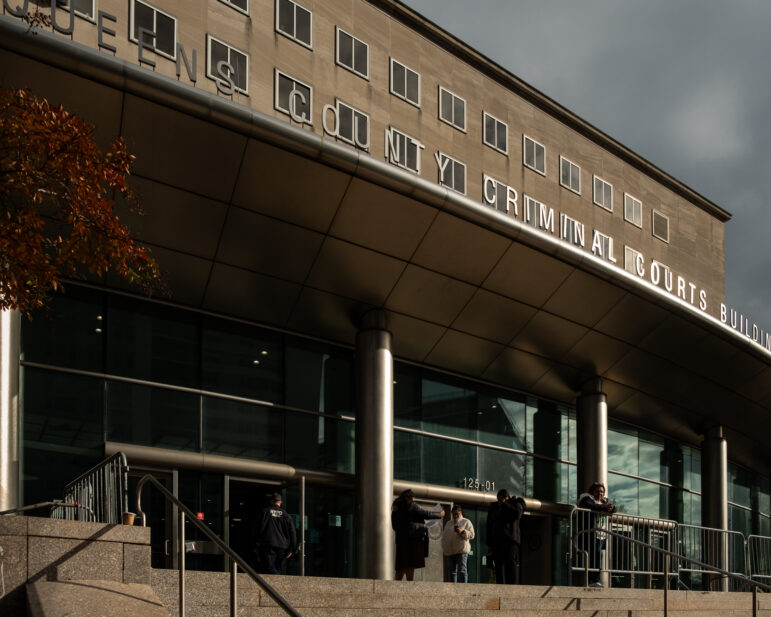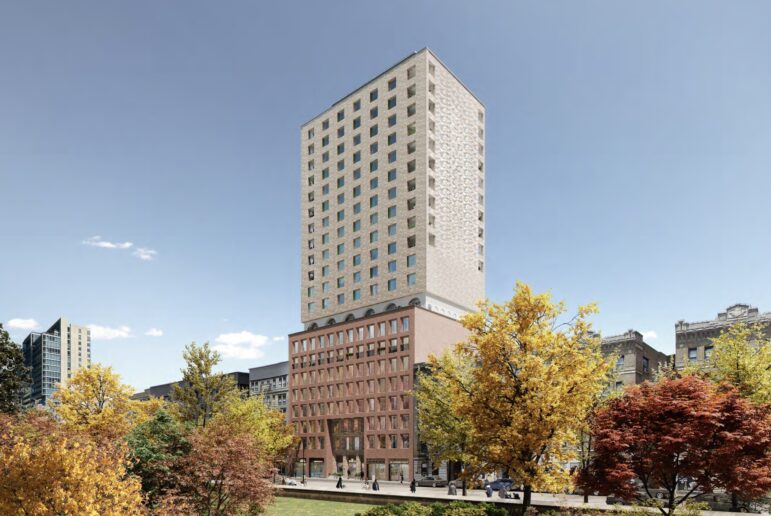This summer, the South Bronx basked in the national spotlight when Yankee Stadium hosted Major League Baseball’s 79th annual All-Star Game. The last time the game was played at the legendary ballpark – where the Bronx Bombers are currently wrapping up their final regular season games before christening a new stadium next year – was in 1977.
Echoes of the summer of ’77 take many New Yorkers back to an era that remains scorched into their collective memory. With the Son of Sam serial killer on the loose, plus a heatwave and blackout of historic proportions – both of which hit the South Bronx especially hard – it was an unsettling and unforgettable time.
But since then, so much in the area has changed. On blocks where discarded buildings were once regularly set afire, refurbished property, including three-family homes and brownstones, can be found. Yet in order to fully appreciate how far the South Bronx has come, it’s only fitting to revisit where it has been. With Do Not Give Way To Evil: Photographs of The South Bronx, 1979-1987 (powerHouse Books, $35.00), photographer Lisa Kahane provides a vivid retrospective. With dozens of color and black-and-white photos and spare but powerful text, it’s a gut-wrenching and visually striking album of a New York City neighborhood on the brink of destruction. By 1979, the South Bronx had become an international symbol of urban blight and neglect. “Desolation attracted me,” Kahane writes in the introduction. “I recorded the Bronx in an attempt to explain it to myself.” The wholesale abandonment and displacement of the area’s population ensued after a decade of arson-for-profit schemes, unrelenting crime and poverty, and a policy of “planned shrinkage” that withdrew a range of city services from the South Bronx. In the resulting chaos, a once-vibrant community disintegrated, and rows of abandoned buildings and rubble-strewn lots came to resemble bombed-out cities in the aftermath of war. Meanwhile the nation was suffering economic woes, with energy and oil prices up, national manufacturing in decline – and inflation and unemployment on the rise as well.
~
Today – three decades after Kahane was encouraged by a friend to photograph the area’s people, places and plight for history’s sake – her often harrowing images provide a fascinating look at the era, when those who remained in the South Bronx were left to fend for themselves. By capturing the daily lives and sheer humanity of a broad demographic of local residents in the face of countless obstacles, Kahane’s penetrating camera also captures a disappearing phenomenon in urban America in the digital age – the adventurous relationship that children and adults alike had with their immediate surroundings. For so many, the city surely seemed much more expansive in those years. Despite the presence of the now-defunct Redbird subway train along the No. 2 line, Brooklyn might as well have been near Beijing to many of those who lived along Fordham Road. And the same could have been said about the South Bronx among those who called Flatbush Avenue home. Through Kahane’s photos, the past, present and future blend in compelling fashion. It’s impossible, for instance, to view the picture of the solitary boom box surrounded by abandoned buildings and not reflect upon the global stage that musicians from DJ Kool Herc and Afrika Bambaataa to Grandmaster Flash would eventually occupy. By chronicling the lives and conditions of those who were being pushed perilously close to the edge, Kahane’s work underlines the regeneration that’s one of the most awe-inspiring characteristics about people – and New York. Indeed, the title of the book is taken from the Bronx’s slogan: Ne Cede Malis.
~
With an already record-setting, yet still surging, U.S. prison and jail population of 2.3 million (the largest in the world), the considerations of the criminal justice system proves to be fertile ground for sharp analysis and lively prose in the inaugural edition of a literary journal from John Jay College of Criminal Justice, J Journal: New Writings on Justice (John Jay College, $10). By inviting the creative writing skills of educators, law enforcement professionals and the incarcerated, “J Journal” is a stimulating – and sometimes disturbing – collection of poems, essays and short stories on the nature of crime and justice in America. Whether it’s CUNY Law Professor Ruthann Robson’s narrative of a potential juror’s mindset (entitled “any reason”), a chilling foray into the criminal mind (author Shoshauna Shy’s poem “Inside the Kidnapper’s Journal”) or City College English Professor Salar Abdoh’s seemingly mundane tale of life at a boarding school – which transforms into a shrewd look at the art of interrogation – this group of contrasting voices covers the waterfront. It will undoubtedly have readers asking crucial questions of themselves, and society as a whole.
Words In Your Face (Soft Skull Press, $17.95) is a delightful journey into the vibrant world of slam poetry. Written by Cristin O’Keefe Aptowicz, a noted spoken word artist and founder of the slam poetry competition outlet NYC-Urbana, “Words In Your Face” combines rich oral history – slam champion Saul Williams articulates the motivations that ultimately drive the performers – with solid reporting to trace the genre’s humble origin at the Green Mill Tavern in Chicago to its later prominence in New York City during the early 1990s. In the process, Aptowicz serves up plenty of backstage drama — namely, the feud between Nuyorican Poets Café founder Miguel Algarín and Bob Holman, who helped to reopen that famed East Village cultural space in 1987 and revitalized it with the now-legendary slam competitions. As a Holman disciple – which presumably explains Algarín’s conspicuous absence – Aptowicz is as a witty, if not dispassionate, guide who accomplishes the challenging task of appealing both to regular slam attendees and those who have never been to a session. One glaring stumble occurs early when a summary of influences rightly credits the impact of the Harlem Renaissance, the Beat Generation and hip-hop, but oddly omits the crucial period of the late 1960s and early ‘70s when The Last Poets, Gil Scott-Heron, and Sonia Sanchez rocked the mic. But Aptowicz recovers by carefully exploring a range of themes – including the tenuous relationship the slam poetry scene had with hip-hop long before Russell Simmons merged those seemingly disparate worlds with “Def Poetry” (on HBO), and how the eventual commercialization of the artform has since given rise to concern over whether poetry has taken a backseat to performance. Hilariously, Maggie Estep, a renowned forerunner of the contemporary slam scene, recalls being backstage at a Def Poetry taping and watching one performer practice his facial expressions. “I almost puked on him,” Estep notes with typical bluntness. As “Words In Your Face” deftly reveals, the edgy and rebellious spirit that slam poetry has traditionally relied upon remains very much intact.







